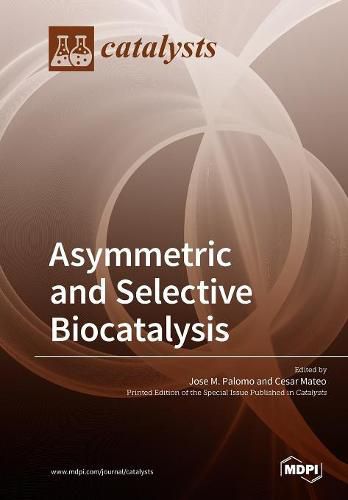Readings Newsletter
Become a Readings Member to make your shopping experience even easier.
Sign in or sign up for free!
You’re not far away from qualifying for FREE standard shipping within Australia
You’ve qualified for FREE standard shipping within Australia
The cart is loading…






This title is printed to order. This book may have been self-published. If so, we cannot guarantee the quality of the content. In the main most books will have gone through the editing process however some may not. We therefore suggest that you be aware of this before ordering this book. If in doubt check either the author or publisher’s details as we are unable to accept any returns unless they are faulty. Please contact us if you have any questions.
The synthesis of compounds or chiral building blocks with the desired configuration is one of the greatest challenges of chemistry, and is of the great interest in fields such as analytical chemistry and especially in fine and pharmaceutical chemistry. For this, different biocatalysts (i.e., cells, enzymes, catalytic antibodies, or ribozymes) have been used to catalyze different processes used, even on an industrial scale. Biocatalysts have a high activity under very mild conditions, such as ambient temperature, neutral pH, and atmospheric pressure. They are also able to catalyze highly selective and specific modifications in different substrates with high complexity, allowing the synthesis of enantiomerically pure compounds either by resolution processes or by asymmetric synthesis from prochiral substrates or regioselective modifications in complex molecules. This avoids side reactions as well as costly purification processes.
In addition to the pure biocatalysts that are traditionally used, in recent years, different hybrid catalysts have been developed that combine the good catalytic properties of traditional biocatalysts with the properties of organometallic catalysts. In this way, different mixed catalysts have been developed as artificial metalloenzymes combining enzymatic and metallic catalytic activities, expanding the applicability to different systems, such as cascade processes.
$9.00 standard shipping within Australia
FREE standard shipping within Australia for orders over $100.00
Express & International shipping calculated at checkout
This title is printed to order. This book may have been self-published. If so, we cannot guarantee the quality of the content. In the main most books will have gone through the editing process however some may not. We therefore suggest that you be aware of this before ordering this book. If in doubt check either the author or publisher’s details as we are unable to accept any returns unless they are faulty. Please contact us if you have any questions.
The synthesis of compounds or chiral building blocks with the desired configuration is one of the greatest challenges of chemistry, and is of the great interest in fields such as analytical chemistry and especially in fine and pharmaceutical chemistry. For this, different biocatalysts (i.e., cells, enzymes, catalytic antibodies, or ribozymes) have been used to catalyze different processes used, even on an industrial scale. Biocatalysts have a high activity under very mild conditions, such as ambient temperature, neutral pH, and atmospheric pressure. They are also able to catalyze highly selective and specific modifications in different substrates with high complexity, allowing the synthesis of enantiomerically pure compounds either by resolution processes or by asymmetric synthesis from prochiral substrates or regioselective modifications in complex molecules. This avoids side reactions as well as costly purification processes.
In addition to the pure biocatalysts that are traditionally used, in recent years, different hybrid catalysts have been developed that combine the good catalytic properties of traditional biocatalysts with the properties of organometallic catalysts. In this way, different mixed catalysts have been developed as artificial metalloenzymes combining enzymatic and metallic catalytic activities, expanding the applicability to different systems, such as cascade processes.